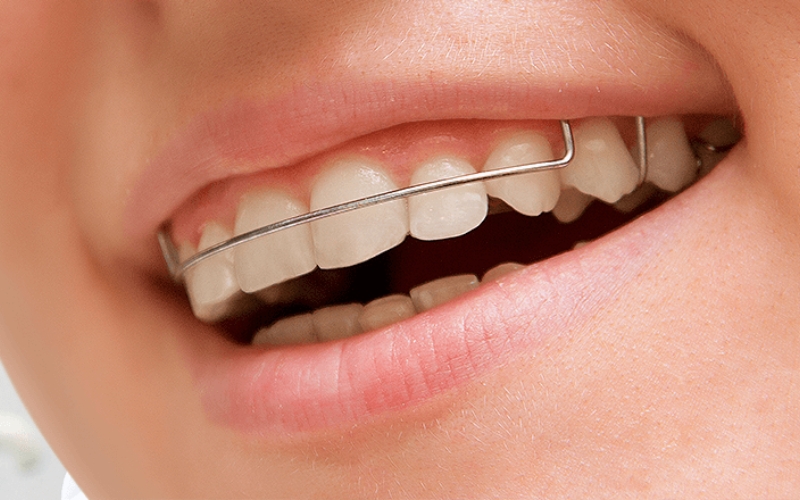
After finishing orthodontic treatment, whether it’s with braces or clear aligners, wearing a retainer is the final step to ensuring your teeth stay perfectly aligned. While retainers play an essential role in stabilizing your smile, many people are unsure about how long they should wear them and how to care for them properly.
This comprehensive guide will address both of these key concerns, offering tips on the right duration for wearing your retainer and how to care for it to maintain the best results.
Importance of Wearing A Retainer
First, it’s essential to understand why wearing your retainer is critical to the success of your orthodontic treatment.
- Teeth Shifting After Braces: Even after your braces or aligners are removed, your teeth may still be prone to shifting. This is because the bone and tissues around your teeth need time to adjust to their new positions.
- Preventing Relapse: If you stop wearing it too soon, your teeth may gradually shift back toward their original positions, undoing the results of your hard work.
- Long-Term Results: Consistent use of retainers ensures your teeth stay in place so you can enjoy your new smile for a lifetime.
How Long Should You Wear It?
The answer to this question can vary depending on your specific orthodontic treatment, but general guidelines can help.
The First Few Months: Full-Time Wear
In the first few months after getting your retainer, it’s crucial to wear it as often as possible to allow your teeth to settle into their new positions. Typically, this means wearing them full-time:
- 24 hours a day (except when eating or drinking) is often recommended during the first few months after removing your braces.
- Consistency is Key: This is the time when your teeth are most likely to relapse, so you’ll want to be diligent about wearing your retainer.
The First Year: Gradual Reduction
Once you’ve worn your retainer consistently for several months, a dentist may advise you to start reducing the wear time. Most people will need to wear it at least 12-14 hours a day during the first year after treatment.
- Nighttime Use: Gradually, you may be able to wear it only at night while you sleep. This will still provide the support your teeth need while allowing you to go about your day without it.
- Stay on Track: Keep in mind that if you miss even 1 or 2 nights, your teeth could start shifting again.
After One Year: Long-Term Maintenance
Once you’ve passed the first year, your teeth are more stable, but retainers still play a vital role in maintaining their alignment.
- Nighttime Only: In most cases, a dentist will suggest that you continue wearing them every night indefinitely. This could continue for years, depending on how your teeth respond.
- Permanent Retainer Option: A permanent one may be recommended for some patients, especially those who had significant adjustments made. This is a thin wire that is bonded to the back of your teeth and remains in place indefinitely. It can eliminate the need for removable retainers.
Here’s How To Care for Your Retainer?
Proper care of your retainer is just as important as wearing it consistently. It not only ensures that your teeth stay in place, but it also helps extend the life of the retainer itself.
Daily Cleaning
Your retainer needs regular cleaning to avoid the buildup of bacteria and plaque, which can lead to bad breath or even gum issues.
- Rinse After Every Use: After removing it, rinse it with warm (not hot) water to remove saliva and food particles.
- Brush Your Retainer: Use a soft toothbrush and a small amount of mild soap or a retainer cleaner to gently brush the surface. Avoid using toothpaste, as it can be abrasive and scratch the retainer.
- Avoid Hot Water: Hot water can warp plastic retainers, so always use cool or lukewarm water to clean them.
Storage Tips
When you’re not wearing your retainer, proper storage is key to preventing damage.
- Use a Case: Always store it in its protective case when you’re not wearing it. This helps keep it clean and safe from being accidentally crushed or damaged.
- Avoid Biting Down on Your Retainer: Don’t bite or chew on it, as this can cause cracks or breakage.
Avoid Harsh Chemicals
While it may be tempting to use strong cleaning products, avoid using bleach, alcohol-based cleaners, or boiling water, as they can damage the retainer material.
- Cleaning Tablets: Special retainer cleaning tablets are available, but make sure to follow the manufacturer’s instructions for safe use.
Common Retainer Problems and Ways To Fix Them
Retainers are durable, but like any dental appliance, they can face issues over time. Here are some common problems and how to address them:
Retainer Is Loose or Doesn’t Fit
- Solution: If your retainer feels loose or no longer fits properly, it could be a sign that your teeth have shifted. Contact our dentist for an adjustment or replacement.
Retainer Is Stained or Dirty
- Solution: Regular cleaning with a soft toothbrush and mild soap should help prevent stains. If the retainer is heavily stained, ask the dentist about professional cleaning options.
Cracked or Broken Retainer
- Solution: If your retainer is cracked or broken, it’s important to replace it right away. Wearing a damaged one can hinder the effectiveness of your orthodontic treatment.
Ultimately, wearing your retainer consistently and following proper care guidelines are crucial steps in maintaining your beautiful smile after orthodontic treatment. While the duration for wearing it will vary depending on your individual needs, following our dentist’s recommendations will help ensure that your teeth stay aligned.



